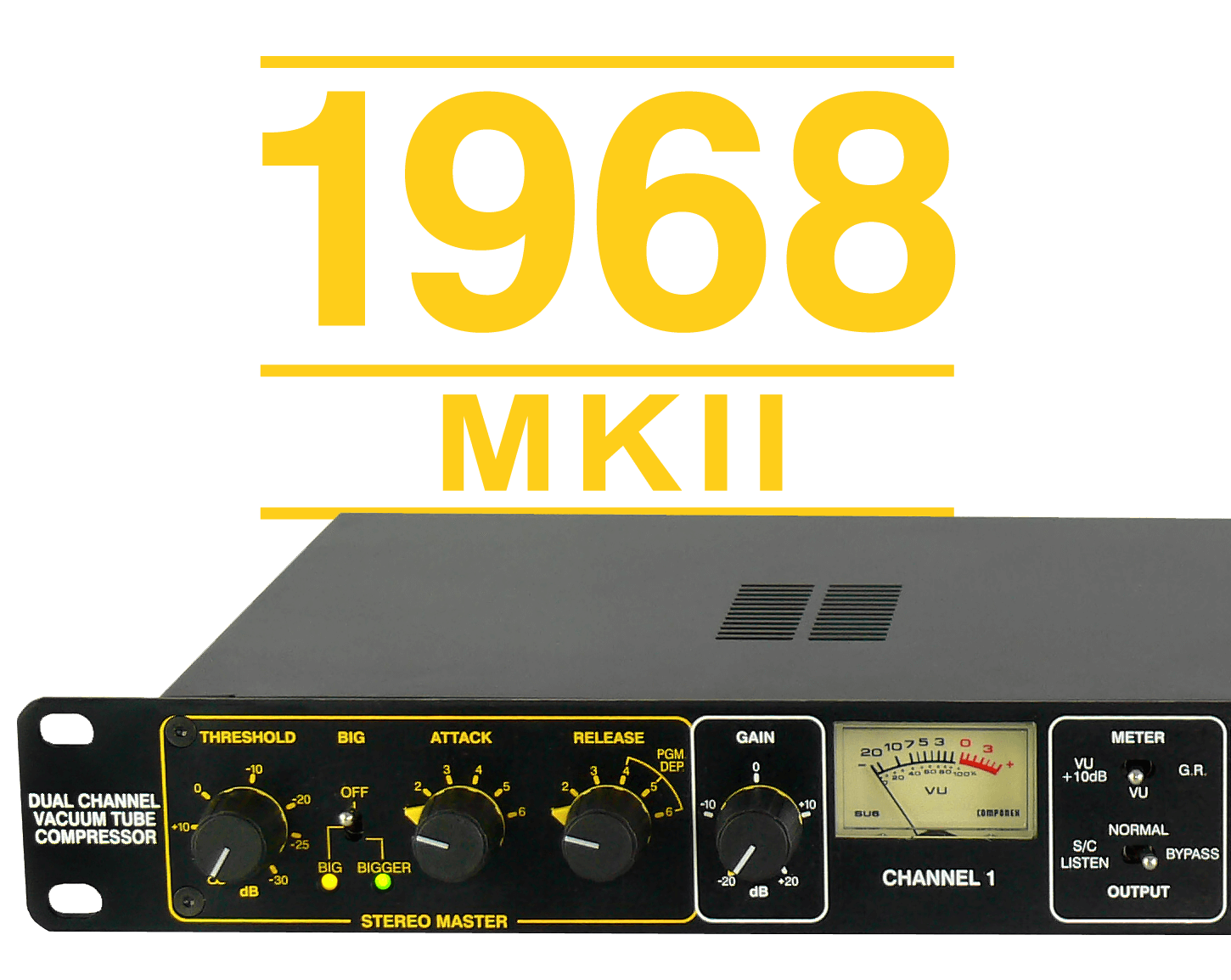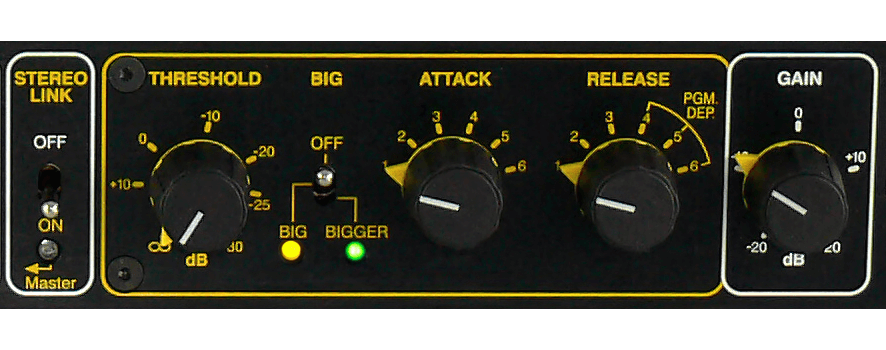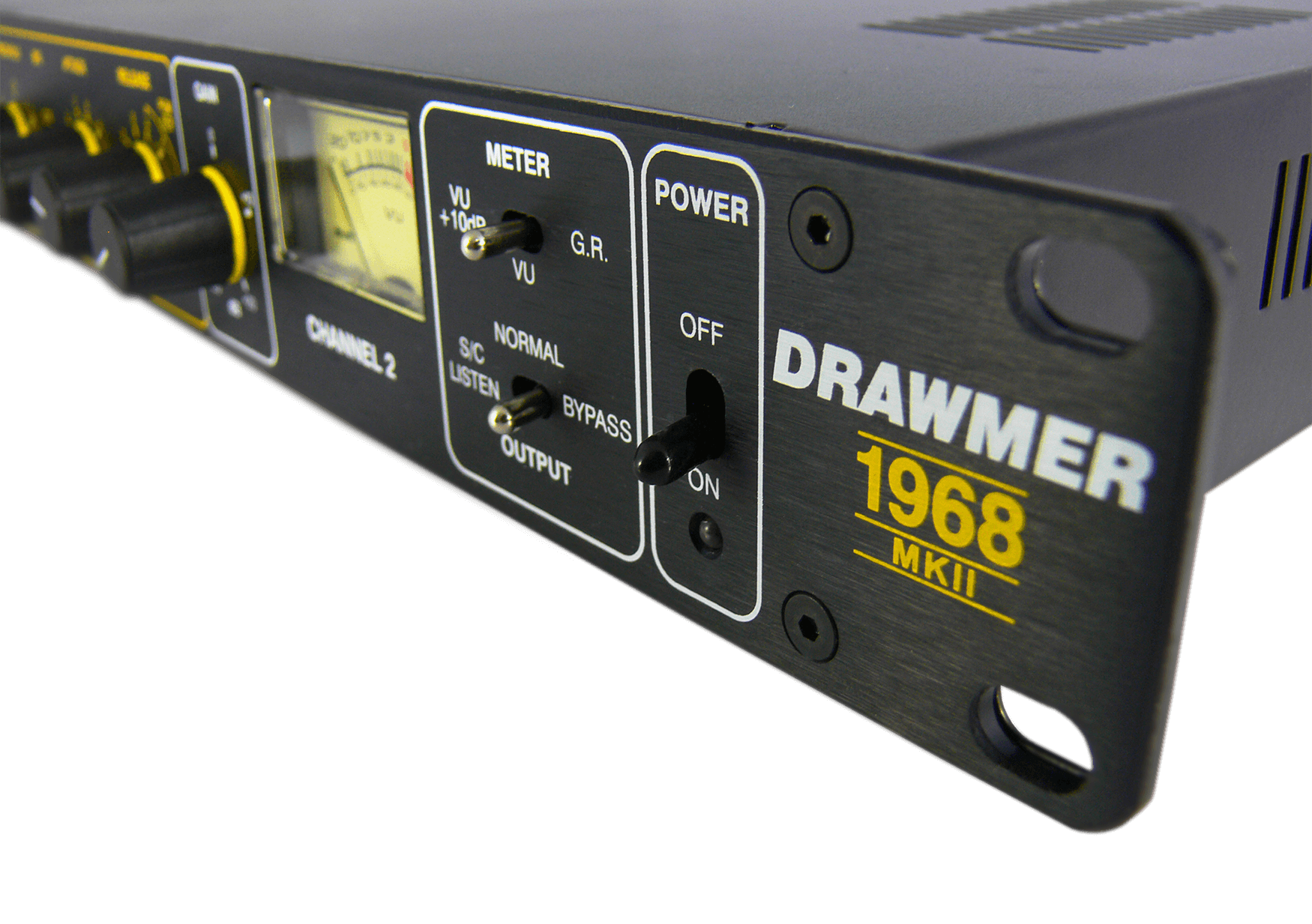
The Drawmer 1968 MkII combines valve warmth with FET precision to deliver high-quality stereo bus compression. Designed for both mix and mastering applications, it offers a transparent, open sound - even under heavy compression - all housed within a compact 1U rackmount chassis.
Building on the legacy of the classic Drawmer 1960, the 1968 MkII replaces the original's valve gain reduction stage with a fast-acting J-FET (Field Effect Transistor) circuit, offering greater speed and accuracy than an opto design. A 12AX7 valve make-up gain amplifier provides up to +20dB of additional gain via the Output Gain control. The compressor's soft-knee characteristic removes the need for a ratio control, ensuring a smooth, musical transition into compression.

The 1968 MkII provides extensive timing options, with six selectable attack times (2, 9, 15, 25, 30 and 50ms) and six release modes: three fixed (100ms, 500ms, 1s) and three programme-dependent (200ms-2s, 500ms-5s, and 1-10s), automatically adapting to complex material for consistent, musical performance.
Full side-chain access allows the use of an external equaliser for de-essing or frequency-conscious compression, extending the creative possibilities.
Each channel features switchable 'BIG' and 'BIGGER' modes, which reduce compression of the fundamental low frequencies while still controlling their harmonics. This prevents low-end pumping and maintains clarity and punch, allowing heavier compression without losing the solidity of the mix.
The result is a tighter, more extended bottom end with enhanced sub-bass and a smoother overall frequency balance.

Its smooth, transparent operation and warm open sound launch it into the top flight. Not only is it a fine mix compressor, with the Big setting living up to its name, but with its fast attack time it’s also great for vocals and acoustic instruments.

Dual illuminated VU meters display output level, gain reduction or VU +10dB mode for higher operating levels, glowing red to warn of approaching clipping.
A three-way output switch selects between normal operation, hard-wired bypass or side-chain listen, giving full control and monitoring flexibility.


| Description | Value | |
|---|---|---|
| INPUT | Input Impedence | 20k Ohms |
| Maximum Input Level | +20dBu | |
| OUTPUT | Output Impedance | <50 Ohms |
| Maximum Output Level into 10k Ohms Load | +21dBu | |
| BANDWIDTH | -1dB | <17Hz to 28kHz |
| -3dB | <10Hz to 47kHz | |
| NOISE @ UNITY GAIN | 22Hz to 22kHz (RMS) | -85dB |
| CROSSTALK | @ 1kHz | better than 100dB |
| @ 10kHz | better than 70dB |
| Description | Value | |
|---|---|---|
| % DISTORTION (THD & NOISE) @ 1kHz | Line Input with BYPASS selected | <0.01% |
| Line Input with NORMAL selected | <0.35% | |
| POWER REQUIREMENTS | 230Volt or 115V at 50-60hZ | 13VA |
| FUSE RATING | @ 230Volt | T160mA |
| @ 115Volt | T315mA | |
| Conforming to IEC 127-2 | ||
| FUSE TYPE | 20mm x 5mm, Class 3 Timed-Blo, 250Volt working | |
| CASE | Depth | 225mm |
| Width | 482mm | |
| Height | 44mm | |
| Weight | 4.0kg |
